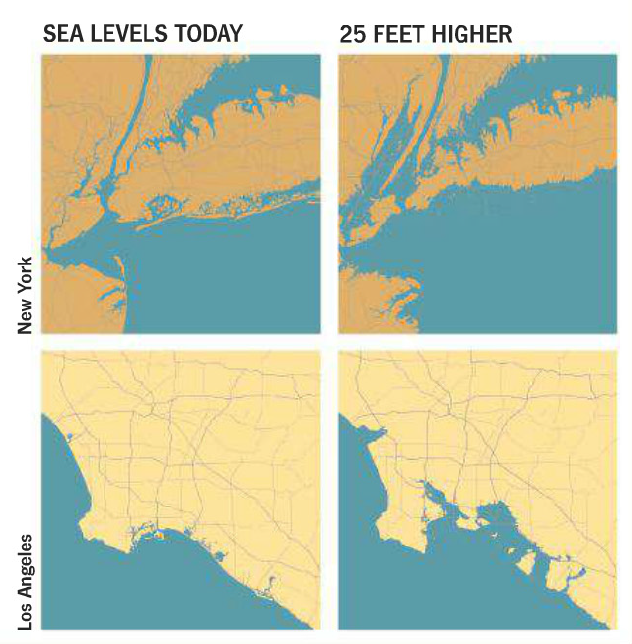The skies all over the world behave unexpectedly nowadays. The changing weather is surely a sound of alarm as slowly and steadily the polar ice melts giving rise to the sea levels all across the world. What is causing this?
Scientists are trying to study the ancient polar ice and its characteristics. NEEM Camp is a remote ice-drilling and research facility on the northern Greenland ice sheet. NEEM is a rough acronym for North Greenland Eemian ice drilling. Last summer the scientists were shocked to receive rain instead of snow. A place where ‘diamond dust’ is a common thing, witnessing rain was quite a rare thing. Ancient ice suggests that scientists maybe dangerously underestimating future sea levels.
It’s a common site in the polar regions to witness diamond dust which is a ground level cloud made up of ice crystals. Such incidents can last up to several days without interruption in the polar regions but can also occur at other places with a temperature below freezing.
It’s fitting that part of the NEEM study’s fieldwork, which retrieved a two-and-a-half-kilometer shaft of ice, took place during one of the hottest Greenland summers on record. What that ice core has revealed about a warm period 130,000 years ago could be one of the most critical new tools for predicting how our planet will respond to a warmer future.
The NEEM ice core has provided the first picture of the Greenland ice sheet during the entire Eemian interglacial period, a 15,000-year span of natural warming that occurred between the two most recent ice ages. During the Eemian, natural variations in Earth’s orbit brought the planet closer to the sun, making global temperatures up to 2°C warmer than right before the industrial revolution. In addition, Eemian Arctic temperatures were 3-5°C warmer than today. That makes the Eemian especially attractive for study, because the Arctic has already warmed 2°C since the early 1980s and is projected to warm at least as much as the Eemian by the end of the century.
What scientists are learning about the Eemian period could be cause for present-day concern.
Based on the study of the paleoclimate record in ice cores as well as the former locations of beaches and coral reefs, researchers believe that the Eemian temperature increase likely pushed global sea levels as high as eight meters (26 feet) above where they are today. That would put many coastal cities deep under water including Miami, the Los Angeles metropolitan area, and large parts of New York. Not only in the US, eventually the rise in water levels will affect other countries as well including many sea island states.

Around 23% of the worlds’ population lives in the near coastal zone with population densities about three times higher than the global average. With a one meter sea level rise some island nations, such as the Maldives, would be submerged. Already, two of the islands that make up Kiribati (a Pacific island nation) have gone under the waves. According to studies if the present global warming continues major cities like London, Bangkok and New York, Shanghai and Mumbai will be among a number of cities which will eventually end up below sea level – displacing millions and causing massive economic damage.
During the Eemian, the polar ice sheets melted over several thousand years; an abrupt increase within the next century—seen by many scientists as inevitable, The ice sheets will take hundreds of years to fully react to warmer ocean temperatures and there won’t be very much we can do about it.
The ice core pulled from the NEEM site has discrete, often visible rings, like a tree trunk—each season’s snowfall creates a new layer of fresh ice. By studying the chemical makeup of the layers, the NEEM scientists learned both the atmospheric temperature and the ice sheet’s height over the years. This data yielded a significant discovery: Previous models had assumed that the Greenland ice sheet was at least half gone at the Eemian’s hottest point, but the ice core showed that the sheet’s total volume decreased just 25 percent. That meltwater would account for only about two meters of global sea rise. Therefore, the remaining six meters of water had to come mostly from Earth’s other major sea-level, the Antarctic ice sheet. This new finding suggests that West Antarctic ice is capable of melting far more than previously thought.
An accurate understanding of what was ice at what point in time is a key tool for testing computer models that forecast when, where, and how ice sheets will melt in the future. As data on ancient climates becomes more reliable, scientists can use that data to check their models and improve them.
Unfortunately, a clearer picture of the future is not necessarily a brighter one. According to IPCC’s (Inter-governmental Panel on Climate Change) latest report of September 2012, the sea-level projections for the coming century are expected to increase, based in part on new models of how ice sheets melt. In a field that predicts the future, a little hard data from the past can go a long way.
Deep study of the ancient ice can help scientists a long way in predicting the water levels which in turn could save lots of lives. But can we challenge Mother Nature even after these studies?
































